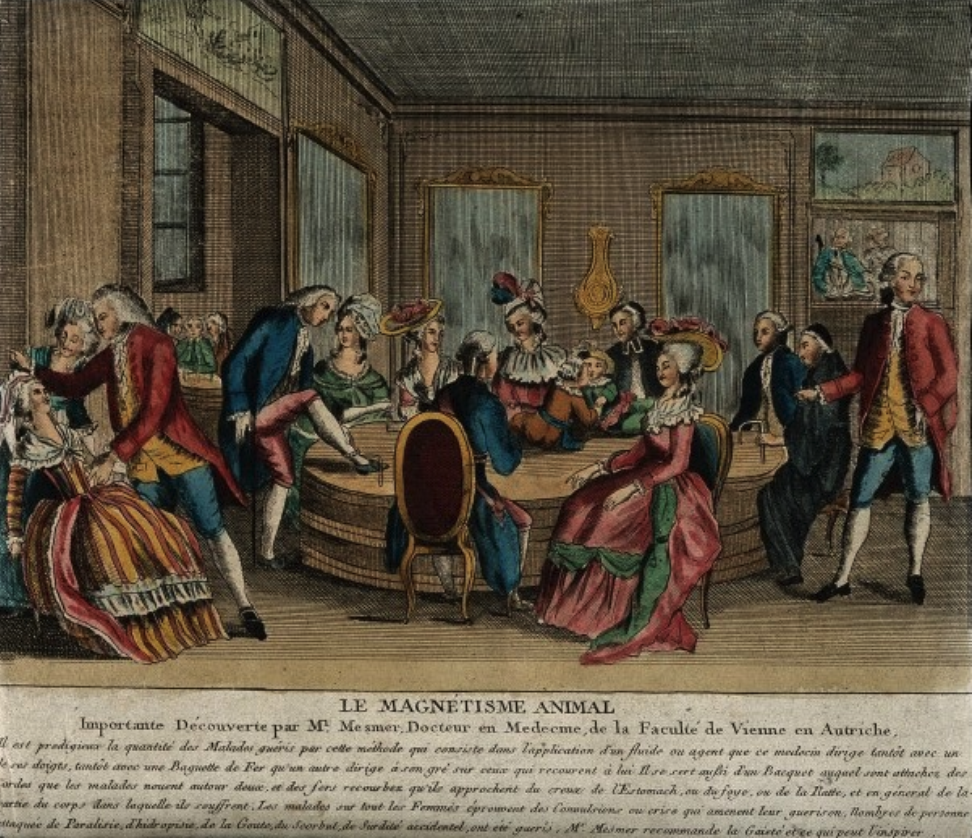

- FRANZ MESMER AND ANIMAL MAGNETISM MANUAL
- FRANZ MESMER AND ANIMAL MAGNETISM TRIAL
- FRANZ MESMER AND ANIMAL MAGNETISM PROFESSIONAL
American Journal of Clinical Hypnosis, 37, 41–48. Early American mesmeric societies: a historical study. the chain of thumbs: why did several eminent eighteenth-century scientists–including Benjamin Franklin–sit around a table playing thumbsies? Natural History, 7, 12–21. Journal of the American Medical Association, 251, 2387–2390. The tomato effect: rejection of highly efficacious therapies. New York: Times Books division of Random House. The limits of medicine: How science shapes our hope for the cure. Statistics in medical research: Developments in clinical trials. International Journal of Clinical and Experimental Hypnosis, 50, 332–363. Report of the commissioners charged by the king with the examination of animal magnetism. Skeptic, 4, 66–83.įranklin, B., Majault, le Roy, Salin, Bailly, J.-S., d’Arcet, et al. The first scientific investigation of the paranormal ever conducted: Testing the claims of mesmerism: commissioned by King Louis XVI: designed, conducted, & written by Benjamin Franklin, Antoine Lavoisier, & others. International Journal of Clinical and Experimental Hypnosis, 50, 364–368.įranklin, B., Majault, le Roy, Salin, Bailly, J.-S., d’Arcet, et al. Secret report on mesmerism, or animal magnetism. Strahan.įranklin, de Borey, Lavoisier, Bailley, Majault, Sallin, et al. Some account on the success of inoculation for the small-pox in England and America. In Mesmerism by Doctor Mesmer (1779): Being the First Translation of Mesmer’s Historic “Mémoire sur la découverte du Magnétisme Animal” to appear in English (pp. Philadelphia: University of Pennsylvania Press.įrankau, G. Journal of the Royal Society of Medicine, 98, 572–575.ĭuveen, D.

FRANZ MESMER AND ANIMAL MAGNETISM TRIAL
Mesmer’s 1780 proposal for a controlled trial to test his method of treatment using ‘animal magnetism’. Cambridge: Harvard University Press.ĭonaldson, I. Mesmerism and the end of the enlightenment in France. Philosophical Transactions of the Royal Society of London, 48, 780–785.ĭarnton, R. A letter to the Right Honourable the Earl of Macclesfield, President of the Royal Society, concerning some new electrical experiments.

Neurypnology: On the rationale of nerveous sleep, considered in relation with animal magnetism. (Humbly dedicated to her Royal Highness the Princess of Wales. Chandler, at the Cross-Keys in the poultry. With some short directions to the unexperienced in this method of practice. Historical account of the small-pox inoculated in New-England, upon all sorts of persons, whites, blacks, and of all ages and constitutions: With some account of the nature of the infection in the natural and inoculated way, and their different effects on human bodies. Washington, DC: American Psychiatric Association (text revision).īoylston, Z.
FRANZ MESMER AND ANIMAL MAGNETISM MANUAL
In Diagnostic and statistical manual of mental disorders (4th ed., pp. This process is experimental and the keywords may be updated as the learning algorithm improves.Īmerican Psychiatric Association. These keywords were added by machine and not by the authors. While one might be tempted to dismiss his therapeutic successes as only applicable to hysterical or imagined illness, some of his patients went on to lead quite functional lives when before they were deemed hopeless invalids, a point that even his detractors acknowledged. In retrospect it is clear that traditional physicians in the late eighteenth century had little to offer their patients therapeutically that had any real possibility of benefit, and instead, often harmed their patients with their treatments, whereas Mesmer could demonstrate cases “cured” by his treatment that had previously failed all conventional approaches.
FRANZ MESMER AND ANIMAL MAGNETISM PROFESSIONAL
However, mainstream medical practitioners, professional societies, and political bodies rejected Mesmer and his treatment, and ultimately moved to eliminate Mesmer’s practice and that of his disciples. His claims of dramatic therapeutic success were supported by glowing testimonials, in some cases from socially prominent individuals. In the late eighteenth century, Franz Anton Mesmer (1734–1815) promulgated “animal magnetism” as a pervasive property of nature that could be channeled as an effective therapy for a wide variety of conditions (Fig.


 0 kommentar(er)
0 kommentar(er)
